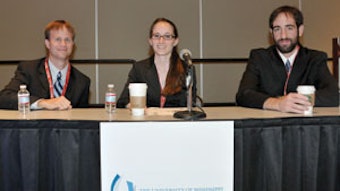Academy Expresses Concerns Regarding Electronic Health Record Stage 2 Proposed Rule
On May 7, the Academy submitted comments to the Centers for Medicare and Medicaid Services (CMS) regarding the proposed rule for “Medicare and Medicaid Programs; Electronic Health Record Incentive Program—Stage 2.” The Academy expressed its support for adopting robust and applicable electronic health records (EHRs) into practices to improve quality of care and enhance patient safety, but cautioned that stringent program requirements with high satisfaction thresholds will hinder health information technology (HIT) adoption. While the Academy supports a staged approach to the EHR meaningful use incentive program, it believes this approach must take into account the current technological realities and the additional financial and administrative costs that will be incurred by physicians to meet all of the program requirements. Our letter focused on the proposed Menu Set of Measures and Objectives and the proposed Options for reporting Clinical Quality Measures (CQMs). Menu Set: Measures and Objectives CMS proposed 17 core objectives and five menu objectives that Eligible Professionals (EPs) must meet, or qualify for an exemption. EPs must meet all 17 core objectives and three out of five menu objectives. The Academy expressed concerns about many of these core and menu objectives. Often, the objectives set incredibly high thresholds that would be difficult for physicians to meet and attest to for successful meaningful use. Specific concerns were raised by the Academy about several specific core objectives including: Computerized Physician Order Entry (CPOE) requirements; electronic prescribing; incorporating clinical lab-test results into EHR as structured data; providing patients with electronic access to their health information and providing clinical summaries for patients; and medication reconciliation. In the proposed rule, CMS included a measure for CPOE for more than 60 percent of medication, laboratory, and radiology orders made by a licensed professional. The Academy recommended that CMS remove the laboratory and radiology requirements during the EHR reporting period and decrease the proposed threshold for medication orders to require only one laboratory and one radiology order be entered electronically. The rule also proposed an increase in the requirement of orders transmitted as e-prescriptions, which the Academy does not support. Another requirement proposed was the incorporation of lab test results into EHRs. Although the Academy is supportive of the idea, it believes this requirement forces practices to purchase costly lab interfaces in order to meet meaningful use requirements. The proposed rule also requires physicians to provide clinical summaries within 24 hours and to provide patients the ability to view their health information within four days of the information being available to the practice. The Academy believes patients should have access to information online, but the “24-hour and four day” time limits are arbitrary and fail to recognize that physician practices are not typically open 24 hours a day. In addition, this requirement fails to appreciate that some information should be provided to patients only during a face-to-face encounter. Clinical Quality Measures In the proposed rule, CMS includes two reporting options for consideration for CY 2014, Option 1 and Option 2. Option 1 includes two alternatives: 1a and 1b; however, only one method will be finalized. In Option 1a, EPs would report 12 CQMs from those listed in Table 8 of the proposed rule, including at least one measure from each of the six domains. These domains include the following: Patient and family engagement; Patient safety; Care coordination; Population and public health; Efficient use of healthcare resources; and Clinical process/effectiveness. The proposal for Option 1b includes EPs who would report 11 “core” CQM listed in Table 6, plus one “menu” CQM. Option 2 would allow Medicare EPs who submit and satisfactorily report Physician Quality Reporting System (PQRS) measures under the PQRS EHR reporting option, using certified EHR technology, to satisfy their CQM reporting requirement under the Medicare EHR incentive program. The Academy supports having options 1 and 2 to allow otolaryngologists to participate in the program, while it continues to develop specific clinical quality measures. Having the two options allows flexibility. Of the two Option 1 reporting options, Option 1a (12 measures, reporting at least one measure across the six domains) is preferable as it would allow more members to participate rather than submitting zero denominators. The Academy also encouraged CMS to consider a third option where EPs would report six CQMs, including at least two clinically relevant measures from any, not each, of the six domains. This is a more feasible option that would help ensure EPs can identify measures specific to their specialty. Along with its comment letter, the Academy also signed on to two additional letters drafted by the American Medical Association and the American College of Surgeons. In these letters, the signed organizations expressed their desire to work with CMS on the adoption of EHR and Meaningful Use, but outlined concerns related to the stringent requirements necessary to meet Meaningful Use that could exclude specialists, such as otolaryngologists. The Academy signed onto these letters to reiterate common concerns across specialties regarding the proposed rule, but where there is any ambiguity, its comments take precedence. You can see the entire letter to CMS at http://www.entnet.org/Practice/ONC.cfm. Questions about EHR, Meaningful Use, or the proposed rule for Stage 2 should be directed to the Health Policy Unit at healthpolicy@entnet.org.
On May 7, the Academy submitted comments to the Centers for Medicare and Medicaid Services (CMS) regarding the proposed rule for “Medicare and Medicaid Programs; Electronic Health Record Incentive Program—Stage 2.” The Academy expressed its support for adopting robust and applicable electronic health records (EHRs) into practices to improve quality of care and enhance patient safety, but cautioned that stringent program requirements with high satisfaction thresholds will hinder health information technology (HIT) adoption.
While the Academy supports a staged approach to the EHR meaningful use incentive program, it believes this approach must take into account the current technological realities and the additional financial and administrative costs that will be incurred by physicians to meet all of the program requirements. Our letter focused on the proposed Menu Set of Measures and Objectives and the proposed Options for reporting Clinical Quality Measures (CQMs).
Menu Set: Measures and Objectives
CMS proposed 17 core objectives and five menu objectives that Eligible Professionals (EPs) must meet, or qualify for an exemption. EPs must meet all 17 core objectives and three out of five menu objectives. The Academy expressed concerns about many of these core and menu objectives. Often, the objectives set incredibly high thresholds that would be difficult for physicians to meet and attest to for successful meaningful use. Specific concerns were raised by the Academy about several specific core objectives including: Computerized Physician Order Entry (CPOE) requirements; electronic prescribing; incorporating clinical lab-test results into EHR as structured data; providing patients with electronic access to their health information and providing clinical summaries for patients; and medication reconciliation.
In the proposed rule, CMS included a measure for CPOE for more than 60 percent of medication, laboratory, and radiology orders made by a licensed professional. The Academy recommended that CMS remove the laboratory and radiology requirements during the EHR reporting period and decrease the proposed threshold for medication orders to require only one laboratory and one radiology order be entered electronically. The rule also proposed an increase in the requirement of orders transmitted as e-prescriptions, which the Academy does not support. Another requirement proposed was the incorporation of lab test results into EHRs. Although the Academy is supportive of the idea, it believes this requirement forces practices to purchase costly lab interfaces in order to meet meaningful use requirements.
The proposed rule also requires physicians to provide clinical summaries within 24 hours and to provide patients the ability to view their health information within four days of the information being available to the practice. The Academy believes patients should have access to information online, but the “24-hour and four day” time limits are arbitrary and fail to recognize that physician practices are not typically open 24 hours a day. In addition, this requirement fails to appreciate that some information should be provided to patients only during a face-to-face encounter.
Clinical Quality Measures
In the proposed rule, CMS includes two reporting options for consideration for CY 2014, Option 1 and Option 2. Option 1 includes two alternatives: 1a and 1b; however, only one method will be finalized. In Option 1a, EPs would report 12 CQMs from those listed in Table 8 of the proposed rule, including at least one measure from each of the six domains. These domains include the following:
- Patient and family engagement;
- Patient safety;
- Care coordination;
- Population and public health;
- Efficient use of healthcare resources; and
- Clinical process/effectiveness.
The proposal for Option 1b includes EPs who would report 11 “core” CQM listed in Table 6, plus one “menu” CQM. Option 2 would allow Medicare EPs who submit and satisfactorily report Physician Quality Reporting System (PQRS) measures under the PQRS EHR reporting option, using certified EHR technology, to satisfy their CQM reporting requirement under the Medicare EHR incentive program.
The Academy supports having options 1 and 2 to allow otolaryngologists to participate in the program, while it continues to develop specific clinical quality measures. Having the two options allows flexibility. Of the two Option 1 reporting options, Option 1a (12 measures, reporting at least one measure across the six domains) is preferable as it would allow more members to participate rather than submitting zero denominators. The Academy also encouraged CMS to consider a third option where EPs would report six CQMs, including at least two clinically relevant measures from any, not each, of the six domains. This is a more feasible option that would help ensure EPs can identify measures specific to their specialty.
Along with its comment letter, the Academy also signed on to two additional letters drafted by the American Medical Association and the American College of Surgeons. In these letters, the signed organizations expressed their desire to work with CMS on the adoption of EHR and Meaningful Use, but outlined concerns related to the stringent requirements necessary to meet Meaningful Use that could exclude specialists, such as otolaryngologists. The Academy signed onto these letters to reiterate common concerns across specialties regarding the proposed rule, but where there is any ambiguity, its comments take precedence.
You can see the entire letter to CMS at http://www.entnet.org/Practice/ONC.cfm. Questions about EHR, Meaningful Use, or the proposed rule for Stage 2 should be directed to the Health Policy Unit at healthpolicy@entnet.org.








